Are you looking for a reliable marketplace solution for your online business? This guide covers everything you need to know about multi-vendor marketplace platforms.
A Multi-Vendor Marketplace Platform is the software that provides a standard framework for creating an online marketplace. It allows multiple vendors to set up their own shops, manage their inventory, and handle orders—all within a single website.
Currently, you’ll find many multi-vendor marketplace platforms available in the market. But as a beginner, picking the right one can be challenging. You have to evaluate factors like scalability, ease of use, and customer engagement features.
To make it easier for you, I’ll walk you through every step to choose the right Multi-Vendor Marketplace Platform and utilize it to build a successful online venture.
Let’s start with the basic ⤵️
What is an eCommerce Marketplace?

An eCommerce marketplace or online marketplace is a digital place where several vendors come together to sell different varieties of products.
On a marketplace, vendors can manage their mini stores individually and sell products directly to the buyers through the platform.
As an admin, your responsibility is to manage the overall activities of the platform. In turn, you’ll get a commission on every product or item sold on the platform.
As you can see, running a marketplace is a complex operation. You have to handle many tasks, like managing the platform, supporting vendors, and making sure customers have a good experience.
Each vendor also needs to manage their own shop, which adds to the complexity.
In this context, a marketplace platform becomes invaluable. This includes tools for managing vendor shops, processing transactions, and keeping everything secure.

Introduction to Multi-Vendor Marketplace Platforms

The Multivendor Marketplace platform is a software solution that provides a basic structure and many useful features to create your digital marketplace.
It handles all the marketplace tasks like vendor management, processing payments, and tracking orders. The platform ensures that customers have a smooth shopping experience.
An optimized platform allows various vendors to operate independently while sharing a unified space. Buyers can shop from multiple sources without leaving the site.
Here are some key features and components typically involved in such a platform:
- Vendor Management: Tools for vendors to manage their product listings, pricing, and inventory. This includes features like dashboards, product upload interfaces, and order management.
- Product Listings: A catalog system to display products or services from various vendors. This often includes search and filtering options to help customers find what they’re looking for.
- Commission Management: This includes configuring different commission structures, such as fixed fees or percentage-based models. The platform must handle the automatic disbursement of commissions and maintain transparency regarding how fees are applied.
- Payment Split: When a customer buys products or services from different vendors in one transaction, the platform needs to accurately calculate and distribute the payment among the various vendors.
- Admin Dashboard: An administrative interface for managing the overall marketplace, including monitoring transactions, handling disputes, and managing vendor relationships.
- Dispute Resolution: Provides a structured way to handle conflicts between buyers and vendors. The platform offers tools for negotiation or mediation.
- Multiple Shipping Options: Integrate with multiple shipping carriers (e.g., UPS, FedEx, DHL) to offer a range of delivery choices.
- Security & Compliance: Protect user data and ensure the platform follows all legal and regulatory standards.
- Scalability and Performance: Infrastructure to support a growing number of vendors and customers, ensuring the platform remains responsive and reliable.
- Integration Capabilities: Extend the functionality of the marketplace by connecting with third-party services and applications.
Popular platforms that offer multi-vendor capabilities include Magento, Dokan, Shopify Plus, and custom-built solutions. Each platform has its own set of features and customization options depending on the specific needs of the marketplace.

What to Consider to Choose the Right Multi-Vendor Marketplace Platform
As I said before, there are many multi-vendor marketplace platforms available in the market.
But here’s the thing: not all platforms are perfect for everyone.
From my perspective, I prefer to choose a platform that fits my specific needs and goals. Each platform has its own strengths, and what works for one business might not be ideal for another.

When choosing the right multi-vendor marketplace platform, consider the following factors:
- Business Requirements:
- Business Model Compatibility: Ensure the platform supports your specific business model (B2B, B2C, C2C).
- Size and Scale: Evaluate if the platform can handle your current and future needs in terms of the number of vendors, products, and transaction volume.
- Industry Specifics: Ensure the platform supports the unique requirements of your industry (e.g., digital goods, physical products, services).
- Customization and Flexibility:
- Customization Options: Check how easily you can customize the platform to fit your brand and operational needs.
- Extension and Integration: Look for the availability of plugins, extensions, and integration with other systems (e.g., CRM, ERP).
- Ease of Use:
- User Interface: Consider the ease of use for both buyers and sellers, including navigation, search functionality, and checkout processes.
- Vendor Onboarding: Ensure the platform simplifies the process for vendors to list their products and manage their accounts.
- Features and Functionality:
- Vendor Management: Evaluate tools for managing vendors, including onboarding, performance tracking, and dispute resolution.
- Product Management: Look for features that allow vendors to manage inventory, pricing, and product variations.
- Order and Payment Processing: Check for integrated order management, payment gateways, and the ability to handle multi-vendor transactions.
- Scalability and Performance:
- Performance: Ensure the platform can handle high traffic and large volumes of data without compromising performance.
- Scalability: Check if the platform can grow with your business, adding more features or capacity as needed.
- Security and Compliance:
- Data Security: Verify the platform’s security measures for protecting customer and vendor data.
- Compliance: Ensure it complies with relevant regulations and standards (e.g., GDPR, PCI-DSS).
- Support and Maintenance:
- Customer Support: Assess the quality and availability of customer support from the platform provider.
- Maintenance and Updates: Check how updates and maintenance are handled and if there are associated costs.
- Cost:
- Pricing Structure: Understand the pricing model, including setup fees, subscription costs, transaction fees, and additional charges for features or support.
- Total Cost of Ownership: Consider both initial and ongoing costs, including potential costs for customization, maintenance, and scaling.
- User Reviews and Reputation:
- Reputation: Research the platform’s reputation in the market, including reviews from other businesses and feedback from current users.
- Case Studies: Look for case studies or success stories to understand how the platform has worked for similar businesses.
- Additional Tools:
- SEO and Marketing Tools: Evaluate the platform’s built-in SEO features and marketing tools to help promote your marketplace.
- Analytics and Reporting: Check for analytics capabilities to track performance, user behavior, and sales metrics.
- Mobile Responsiveness: Ensure the platform is mobile-friendly, as many users shop via mobile devices.
By thoroughly evaluating these factors, you can select a multi-vendor marketplace platform that aligns with your business goals and operational needs.
Understanding these factors helps prevent future issues, such as integration problems or unexpected costs, and ensures that the platform can grow with your business.

Subscribe to
Dokan blog
Popular Multi-Vendor Marketplace Solution
Let’s talk about some popular multi-vendor marketplace solutions, so you can easily go through them and choose the right multi-vendor marketplace platform for you.
- Dokan
- Shopify
- BigCommerce
- Magento
- CS-Cart
1. Dokan
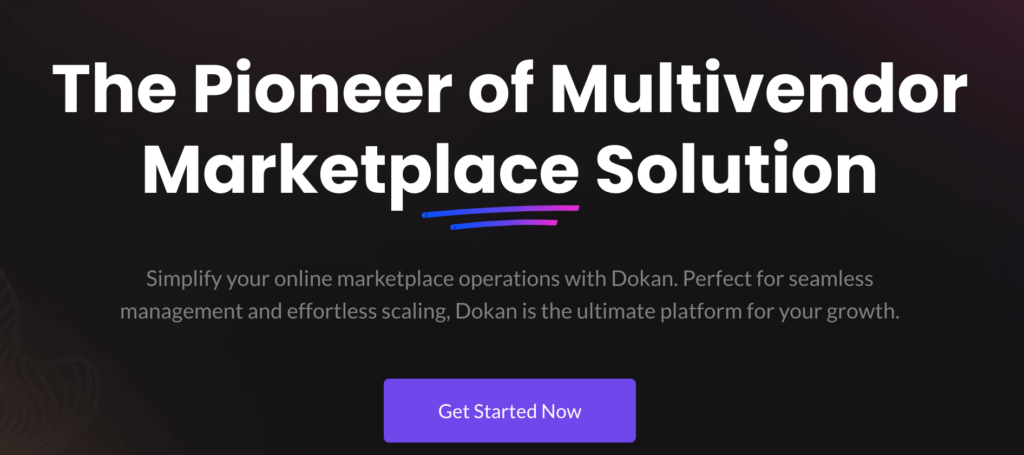
Dokan is a popular multi-vendor plugin for WooCommerce. It transforms your single WooCommerce store into a full-fledged marketplace.
Right now, more than 50k+ WordPress sites are using Dokan to run their online businesses.
With Dokan, you can build any type of marketplace such as booking or rental platforms, all types of digital/physical product-selling platforms, auction sites, and almost anything you can think of.
Once you’ve installed the plugin you get a free marketplace theme with it. However, Dokan is compatible with other WordPress themes as well.
Moreover, Dokan provides you with all the basic features completely FREE. As your business grows, you can unlock the premium features of Dokan according to your needs. Dokan offers 40+ powerful modules to support its users.
Best For: WooCommerce users who want an easy-to-use, affordable solution for adding multi-vendor capabilities.
2. BigCommerce

BigCommerce is a robust eCommerce platform that helps businesses build and run their online stores. It offers tools to create a professional-looking store without needing technical skills. BigCommerce provides features like secure payment processing, inventory management, and marketing tools. It supports a wide range of products and integrates with various third-party applications.
BigCommerce is known for its scalability. As a business grows, the platform can handle increased traffic and sales volume without sacrificing performance.
Best For: BigCommerce is well-suited for mid-sized to large businesses that need a scalable, feature-rich platform to support a growing online presence.
3. CS-Cart
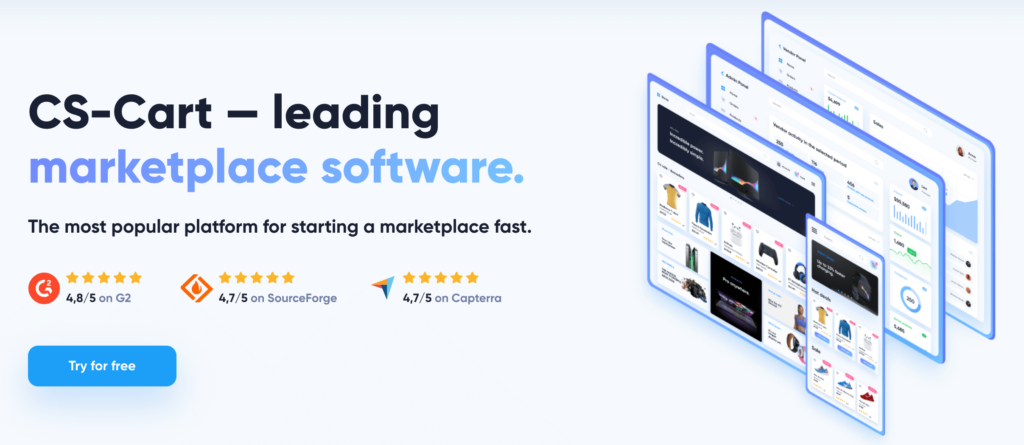
CS-Cart offers a comprehensive solution for building and running a digital storefront with a range of features to suit various business needs. Key features of CS-Cart include product management, flexible shipping options, and integrated payment gateways. It also supports a variety of third-party integrations to enhance functionality and streamline business processes.
Additionally, CS-Cart offers tools for marketing and SEO that help businesses attract and retain customers effectively. CS-Cart is also known for its flexibility and customization options. It provides a range of pre-designed templates and a powerful admin panel.
Best For: CS-Cart is a versatile platform that works well for businesses of varying sizes, particularly those with specific customization requirements and a need for advanced eCommerce capabilities.
4. Magento

Magento is a powerful and flexible eCommerce platform to build a multi-vendor marketplace. It offers a lot of customization options and useful features. With Magento, you can manage a large number of vendors and products, handle high traffic, and set up a marketplace that meets your specific needs.
Right now, Magento is available in three versions: Magento Open Source, Magento Commerce or Adobe Commerce, and Magento Commerce Cloud/Adobe Commerce Cloud.
Best For: Large enterprises or businesses that require a highly customizable and scalable solution.
5. Shopify

Shopify helps people build and run online stores. It started in 2006 and is now widely used by businesses of all sizes. With Shopify, you can set up a store easily using their simple templates. You don’t need to be a tech expert to use it. The platform handles payments, manages inventory, and offers marketing tools.
Shopify offers third-party apps that let you create and manage a marketplace. These apps allow multiple vendors to sell their products and handle payments.
Best For: Medium to large businesses seeking a reliable, hosted solution with strong support and scalability.
These solutions vary in terms of complexity, cost, and scalability, allowing businesses to choose one that best fits their specific marketplace needs.
For further help, you can go through these comparison blogs:
- CS-Cart vs WordPress for eCommerce
- Dokan vs WCFM for eCommerce
- Shopify vs WordPress for eCommerce
- BigCommerce vs WordPress for eCommerce

How to Implement a Multi-Vendor Marketplace Platform for Your Business
After getting your desired marketplace solution, it’s time to implement it within your business. To successfully set up and run a multi-vendor marketplace, it’s essential to follow a structured approach.
Below are the key steps to implement a multi-vendor marketplace platform for your business:
1. Define Objectives
The first step is to clearly define your objectives. Start by asking yourself what you want to achieve with this platform. Are you looking to expand your product offerings, enter new markets, or generate additional revenue streams? Clear objectives will guide your decisions throughout the setup process. For example, if your goal is to offer a wide variety of handmade goods, you should focus on attracting artisans and crafters who align with this vision.
Are you planning to build a marketplace to sell handmade products? Check this blog to create a handmade marketplace like Etsy in 6 steps with WordPress.
2. Platform Setup and Configuration
Once your objectives are clear, choose a suitable multi-vendor marketplace platform. Popular options include Dokan, CS-Cart, Shopify, and BigCommerce. After selecting the platform, install it according to the provided instructions. Customize the design to reflect your brand identity. Use a clean and intuitive layout to enhance user experience. Finally, configure essential features such as payment gateways and shipping options.
3. Vendor Onboarding and Training

With your platform set up, the next step is to onboard vendors. Reach out to potential vendors who align with your marketplace’s vision. For example, if you’re launching a marketplace for eco-friendly products, target vendors who specialize in sustainable goods. You should provide a simple registration process that allows vendors to create their profiles and list their products. Also, offer comprehensive training resources, such as video tutorials or webinars.
4. Marketing and Promotion Strategies
Effective marketing is crucial for attracting both vendors and customers to your marketplace. Launch your platform with a well-planned marketing campaign that includes social media promotions, email newsletters, and online advertisements. Additionally, implementing SEO strategies will help improve your marketplace’s search engine ranking. So users can easily find your site.
5. Monitor and Optimize
After launching your marketplace, continuously monitor its performance. Use analytics tools to track key metrics such as sales volume, user engagement, and vendor performance. You should collect feedback from both vendors and customers to identify areas for improvement. If vendors report issues with the platform’s usability or if customers express dissatisfaction with shipping times, address these concerns promptly.
6. Customer Support
Finally, establish a robust customer support system to assist both vendors and customers. This could include a helpdesk, live chat, or a comprehensive FAQ section. Providing excellent customer support helps resolve issues quickly and maintains a positive experience for users. A report by Zendesk shows that 92% of customers feel satisfied when their issue is resolved on the first contact, highlighting the importance of effective support.
By following these steps, you can effectively set up and manage a multi-vendor marketplace.
It’s important to remember that these steps are just the beginning. Running a successful multi-vendor marketplace involves ongoing management and continuous improvement. This includes regular updates to your platform, adapting to market trends, and responding to changing customer needs.

Bonus: Best Practices and Strategies to Manage Your Multivendor Marketplace Platform
Managing a multi-vendor marketplace can be a daunting task. But by following these best practices you can operate your platform smoothly and efficiently:
1. Effective Vendor Management
Maintain open lines of communication with vendors. Regularly update them on any platform changes, policies, or issues. You can use tools like email, messaging systems, and forums to facilitate clear dialogue. It’s also important to assess vendor performance and provide feedback. A good idea could be implementing programs to reward top-performing vendors and encourage participation.
2. Better Order Management
Organize and track orders efficiently to ensure timely fulfillment. Establish clear guidelines for vendors regarding order handling, shipping times, and customer service. This will help maintain a smooth operational flow.
3. Optimizing the Customer Experience

Ensure that your platform is easy to navigate. A well-designed user interface (UI) helps customers find products quickly and enjoy a seamless shopping experience. Implement intuitive menus, effective search functions, and clear product categories. You can use data analytics to personalize the shopping experience for your customers.
4. Driving Sales and Revenue Growth
Implement strategies to encourage upselling and cross-selling. For example, suggest related products or offer bundle deals during the checkout process. These strategies can help increase the average order value and boost overall sales.
5. Ensuring Platform Security and Compliance
Implement robust security measures to protect customer and vendor data. Use encryption, secure payment gateways, and regular security audits to safeguard sensitive information. Your marketplace should comply with relevant regulations, such as GDPR for European customers or CCPA for California residents.
6. Effective Branding for Your Marketplace
Support your vendors in building their own brands while also strengthening your marketplace’s brand identity. A strong brand helps establish credibility and attract more users. Utilize marketing channels like emails, social media, and newsletters to promote your marketplace and build a loyal customer base.
Are you struggling to create a Digital Marketing Plan for eCommerce? Here are 6 steps to follow.
Final Thoughts
Starting an eCommerce business, especially a multi-vendor marketplace, can be really challenging. You have to manage so many vendors, products, and customers.
In this situation, a dynamic multi-vendor marketplace platform can help a lot. By choosing the right platform and planning carefully, you can simplify your work and focus on growing your business.
If you’re considering building a marketplace, now is a great time to start. With the right strategies and platforms, you can create a successful marketplace that attracts top vendors and delighted customers.
Do you have any further query about multi-vendor marketplace platforms? Do comment and share your experience with us.
Subscribe to
Dokan blog
We send weekly newsletters, no spam for sure!

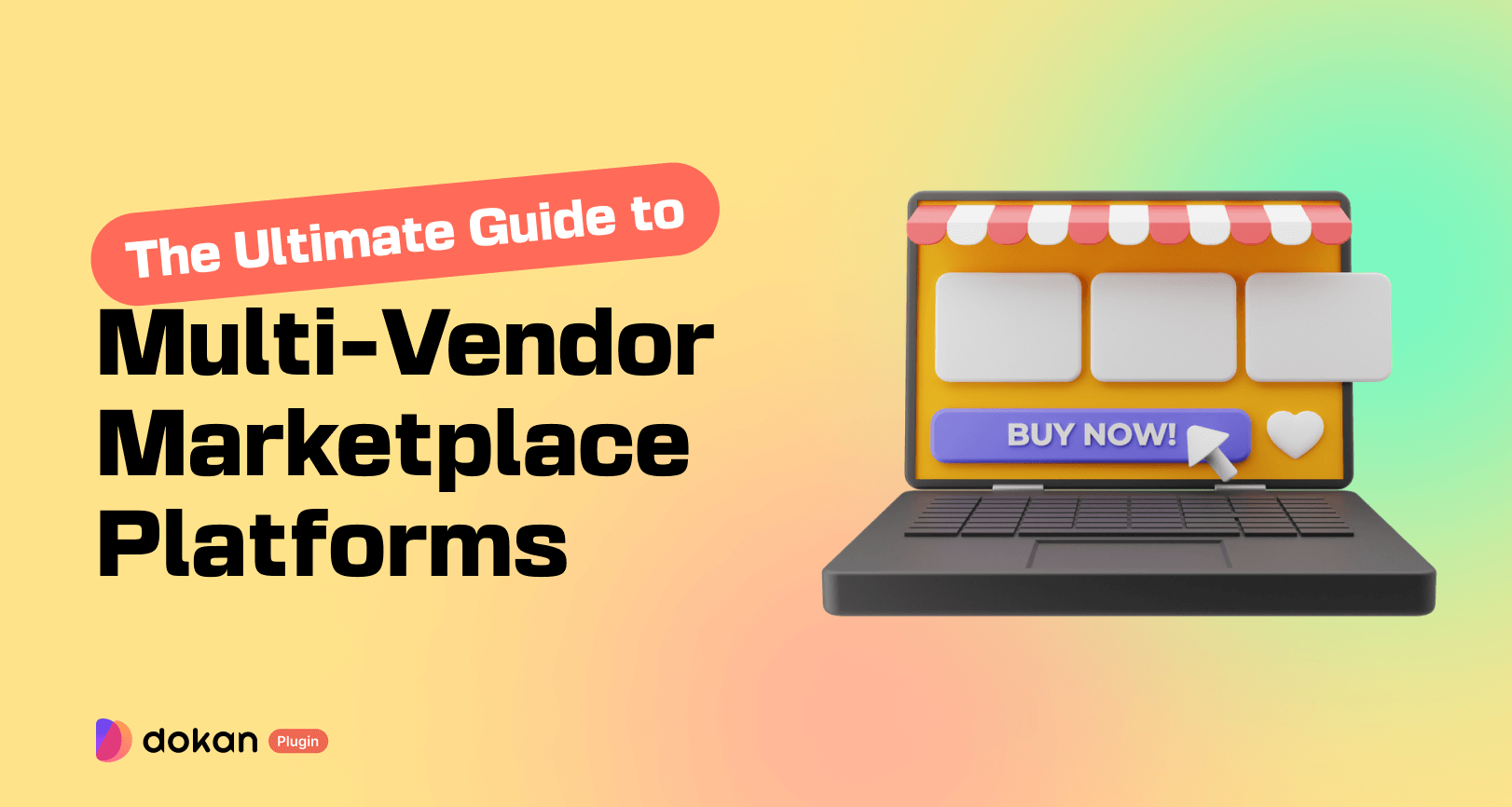


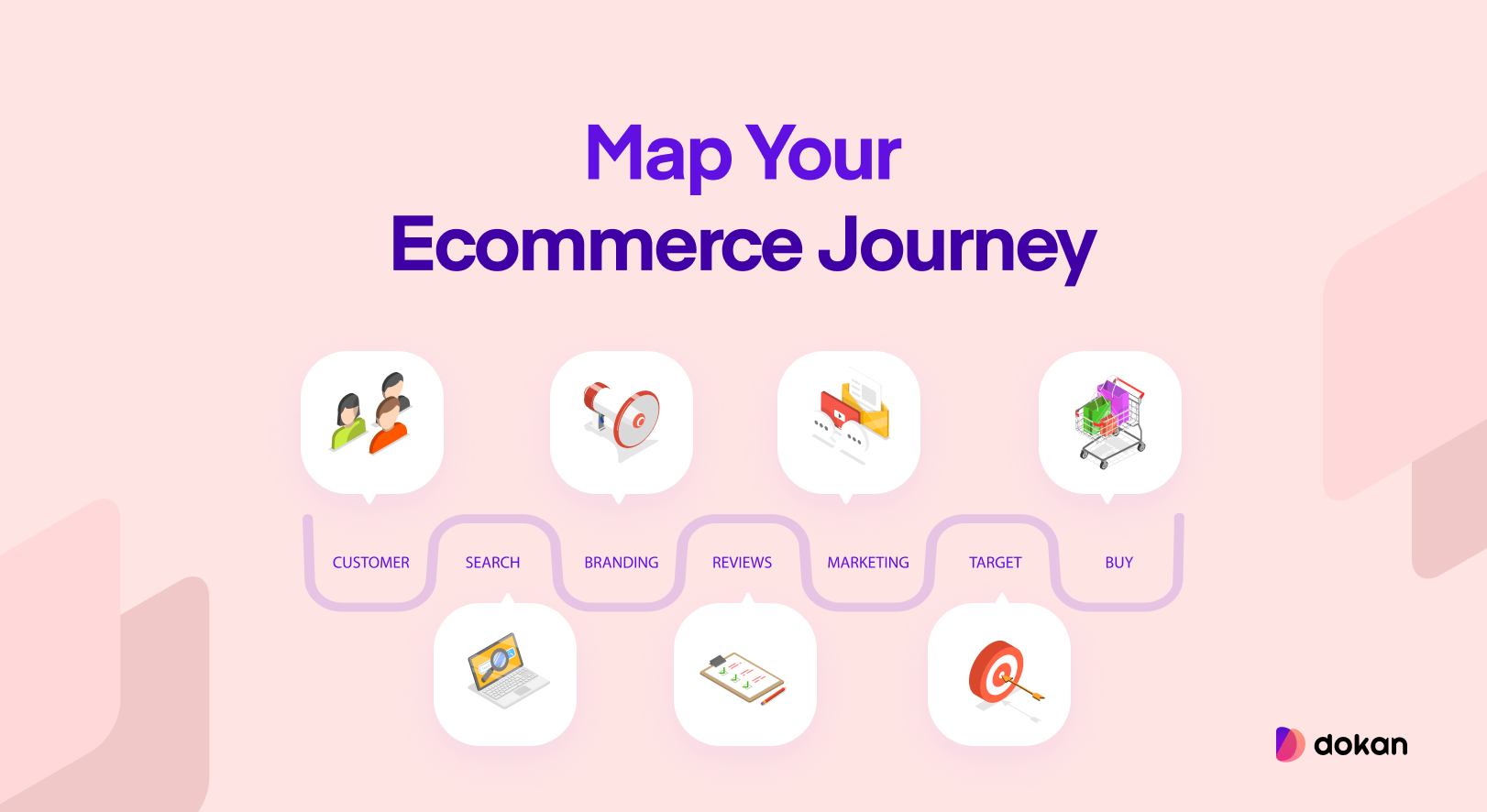
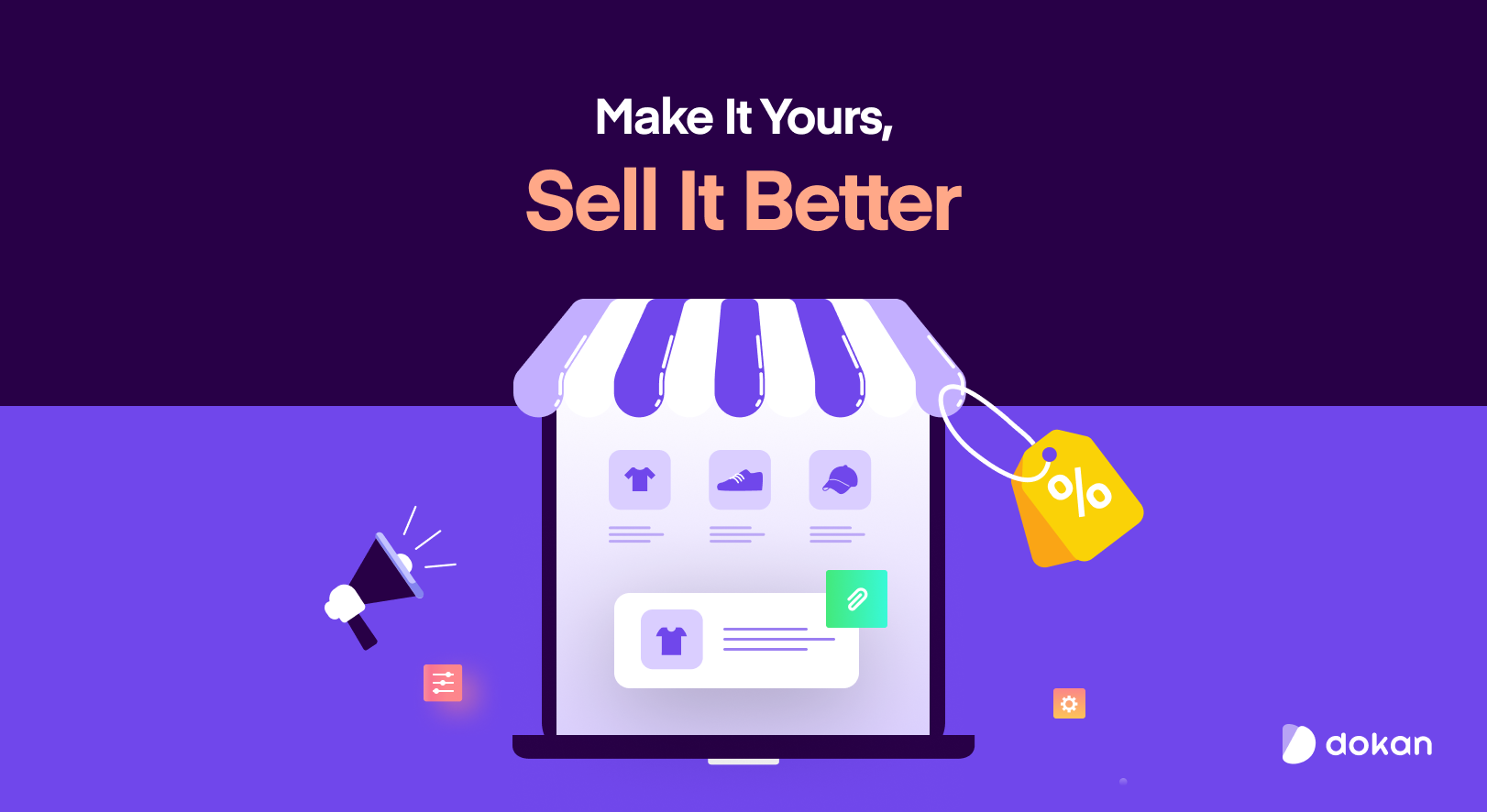

Leave a Reply